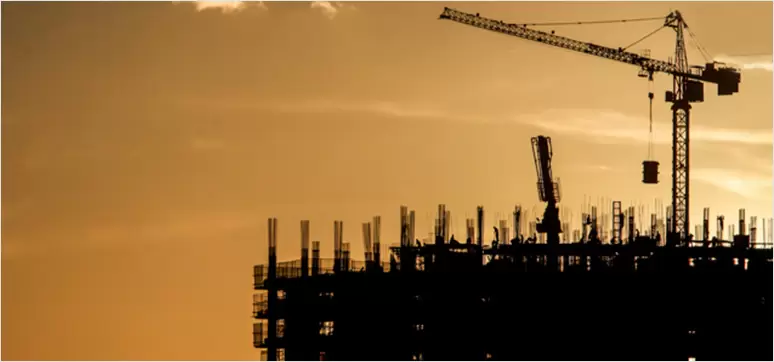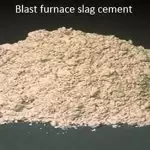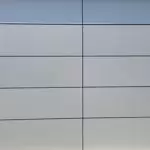Impact of GST & RERA on Façade & Fenestration Industry
Most of the players in the facade & fenestration sector agree that the GST will be a favourable breakthrough for the organised players in the industry going forward. This taxation structure will bring consolidation in the supply chain, promising to facilitate seamless and fast transfer of goods across the country, thus increasing the working capital availability. The idle time would reduce due to easier clearance procedures, eliminating the loss of transit times.
Post your Requirement
RERA Act lays down that in case any structural defect or any other defect in workmanship, quality or provision of services or any other obligations of the promoter as per the agreement for sale relating to such development is brought to the notice of the promoter within a period of five years by the allotted from the date of handing over possession, it shall be the duty of the promoter to rectify such defects without further charge, within thirty days, and in the event of promoter’s failure to rectify such defects within such time, the aggrieved allotted shall be entitled to receive appropriate compensation in the manner as provided under this act. This is a boon to the buyers.
Related Article: GST impact on Cement industry

Manish Bansal, Director,Window
Magic India
Manish Bansal, Director, Window Magic India is excited about the introduction of GST regime. For fenestration industry, he adds, GST will propagate a positive change by ensuring cascading of taxes is reduced. This will be greatly beneficial as it will lead to a lower cost of production. One of the major flaws of the current indirect tax regime – the nonavailability of tax credit of central/union taxes over state taxes and vice versa – could be eliminated by allowing unrestrictive tax credit under GST, adds Bansal.

Saket Jain,Business Head,Fenesta
Building Systems
Saket Jain, Business Head, Fenesta Building Systems agrees that RERA & GST will have a positive impact on the facade and fenestration Industry, particularly to the organized players in this Industry. He is sure that the new directions will help in timely and faster completion of projects and uphold the usage of quality products.

G U V S Nagaraju, Assistant Vice
President – Finance and Accounts,
Aparna
G U V S Nagaraju (Assistant Vice President – Finance and Accounts, Aparna) observes that the onus of developers to provide adequate and extended warranty for the Construction materials & Construction equipment will result in the demand for quality and durable materials which will extend to products like doors and windows. Hence the demand for the uPVC and aluminium doors and windows is bound to increase, he adds. Since the GST rate will be lower for the uPVC product than the previous year’s tax rate, it will bring down the price to the final consumer.
Related Article : Housing prices to come down after GST
Enquire Now : Building and construction materials

Ashok Kumar Bhaiya, CMD, Alu-
decor Lamination Pvt.Ltd
Ashok Kumar Bhaiya, CMD, Aludecor Lamination Pvt.Ltd. points out that with the warranty claws in RERA, if builders don’t use quality Building Products, they will be in trouble, compensating the buyers in case they find any defect in the project in the initial 5 years. “They have to fix any defects for free within 30 days, failing which they ought to compensate,” he expounds. For ACP manufacturers, RERA is a boon since quality products are offered by the organized sector. With the induction of GST, Bhaiya hopes that the costs will go down by 8 to 10% since there are no indirect taxes and due to reduced compliance costs.
Enquire Now For : Building Products
Regarding price implication of GST, one has to see the entire contract and the pricing will depend upon how the contracts are defined or framed post GST, says Somasundaram of 3A Composites. The input credits, which are linked back to back, need more time to see visibility of GST effect.

Narendra Patel, Managing Director,
Torfenster System India Pvt Ltd
Narendra Patel, Managing Director, Torfenster System India Pvt Ltd
remarked that RERA & GST encourage tax compliant & quality conscious companies, insulating them from small unrecognized players who compromise on the product performance by under cutting the price. The home buyer will get better value for his investment & reduced maintenance cost of installed products.
Nagaraju of Aparna too agrees that currently, the fabrication business is dominated by small players who use imported profile components for which they have no control on the quality of the products and materials used. With this implementation, it gives an opportunity for the established players to enter the region with their own manufacturing units and keep the quality in check. This in turn is in line with India’s vision of ‘Make in India’ which meets quality products that meet global standards.
Saket Jain is certain that GST will reduce the tax burden of raw material for the retail customers and builders. Tax credit will be available to all the builders for raw material purchased leading to reduction of overall cost of construction and interstate movement of material would have no additional tax, leading to lower cost to the purchaser.
GST would also help in bringing 100% compliance of tax by all players in the value chain leading to leveled playing field for all. If any business does not conform, they will be unable to obtain input credits which will make them uncompetitive. Hence it will be in everyone’s interest to conform to GST. All of this will surely have a positive impact on organised players in the facade and fenestration industry, assures Jain.
GST Impact on Prices

Satish Kumar, Country Manager,
Ege Profil – Deceuninck India Branch
GST, operational from 1st of July 2017, will bring all companies under one roof. Earlier companies registered under Central Excise could take ITC on goods purchased by them where central excise was charged. In turn they had to charge central excise on their sale. Now all companies are under GST. All of them can take IGST credit. Subcontractors under 20 lakhs for small works need not be under GST. Sub-contractors between 20 to 75lakhs under 1% GST. The buyer can pay GST under reverse charge mechanism and avail ITC. So overall it is going to help the industry.
On some of the raw materials the taxes have increased marginally from say 12.5% Excise + 2% CST to 18% IGST. Earlier 2% CST was a cost whereas now the entire 18% is available as ITC. On few items it has increased to 28% but again fully available under ITC.
Many of these items were being procured locally (intra state) within the state where 12.5% Excise and 14.5% VAT totalling to 27%. In some cases the hardware would be procured from Dealers at 14.5% VAT. The Dealer would have purchased from the Manufacturer at 12.5% Central Excise + 2% CST. By enabling full ITC, there is no overall Tax loss.
Impact of GST on Payment Structure:
It will depend on individual contracts; but if a customer is taking ITC, then he has to make the payment to the vendor within 180 days. Or the vendor can claim the GST amount back and the customer could be penalized. This is still not clear how quality defects and retention would be treated under GST. It could be possible that the Retention amount will be a separate contract.
| PRE GST – Under Excise | ||||||
| Item | Rs/sqft | Excise (12.5%) | CST 2% | VAT 14.5% | Modvat | Landed |
| UPVC Profile | ₹200.00 | ₹25.00 | ₹4.50 | ₹-25.00 | ₹204.50 | |
| Galvanised Steel Reinforcement | ₹50.00 | ₹6.25 | ₹1.13 | ₹-6.25 | ₹51.13 | |
| Hardware | ₹100.00 | ₹12.50 | ₹- | ₹16.31 | ₹-28.81 | ₹100.00 |
| Glass | ₹100.00 | ₹12.50 | ₹- | ₹16.31 | ₹-28.81 | ₹100.00 |
| Value Addition | ₹150.00 | ₹150.00 | ||||
| ₹605.63 | ||||||
| Excise | 12.50% | ₹75.70 | ||||
| VAT | 14.50% | ₹98.79 | ||||
| ₹780.12 | ||||||
| Modvat for customer | ₹-174.50 | |||||
| ₹605.63 | ||||||
Big companies registered under Central Excise and procuring from manufacturers directly
| PRE GST – Not under Excise (<1.5Cr) | ||||||
| Item | Rs/sqft | Excise (12.5%) | CST 2% | VAT 14.5% | Modvat | Landed |
| UPVC Profile | ₹200.00 | ₹25.00 | ₹4.50 | ₹229.50 | ||
| Galvanised Steel Reinforcement | ₹50.00 | ₹6.25 | ₹8.16 | ₹- 8.16 | ₹56.25 | |
| Glass | ₹100.00 | ₹12.50 | ₹- | ₹16.31 | ₹-16.31 | ₹112.50 |
| Value Addition | ₹150.00 | ₹12.50 | ₹- | ₹16.31 | ₹-16.31 | ₹112.50 |
| ₹150.00 | ||||||
| ₹660.75 | ||||||
| VAT | 14.50% | ₹95.81 | ||||
| ₹756.56 | ||||||
| Modvat for customer | ₹- 95.81 | |||||
| ₹660.75 | ||||||
Small companies not registered under Central Excise procuring from manufacturers and local dealers
| UNDER GST | |||||
| Item | Rs/sqft | IGST 18.00% | IGST 28.00% | Modvat | Landed |
| UPVC Profile | ₹200.00 | ₹36.00 | ₹- 36.00 | ₹200.00 | |
| Galvanised Steel Reinforcement | ₹50.00 | ₹9.00 | ₹- 9.00 | ₹50.00 | |
| Hardware | ₹100.00 | ₹28.00 | ₹- 28.00 | ₹100.00 | |
| Glass | ₹100.00 | ₹28.00 | ₹- 28.00 | ₹100.00 | |
| Value Addition | ₹150.00 | ₹600.00 | |||
| GST | 18.00% | ₹108.00 | |||
| ₹- | |||||
| ₹708.00 | |||||
| Modvat for customer | ₹-108.00 | ||||
| ₹600.00 | |||||
Is the GST Decided by the GST Council Fair for the Industry?
Ashok Kumar Bhaiya, Somasundaram and Niraj Borikar agrees that GST is fair as majority of the basic materials in the building materials industry is in the 18% bracket. Earlier, excise duty component was 12.5%, VAT varied from 5% to 13.5% for products depending on the state. Whereas, now it is uniform and no concessional forms are involved. So, transactions will be easier. Rajesh Chawla from Veka is also positive about GST for the same reason. In case of inter-state sale (sale against C forms), the additional 2% against CST becomes a cost to the buyer, for which, under GST a full input will be available.
But Chikodi from Glass Wall System is not very certain about it. “So far I cannot comment 100% on the fairness of introducing GST, but bringing in one tax component is making things easier to understand and maintain,”, he adds. Due to a larger country and many states, we do feel that GST will definitely make a difference in a positive way.
Will the Burden of GST be Ultimately Borne by the Consumers?
GST as such should give price relaxation in-terms of passing on the benefits to the end customers, says Chikodi of Glass Wall Systems. “We have done the study of the same and we find there would be slight difference in various components of goods and services. There is a speculation in our industry that prices should come down provided the benefits are passed on. We will have to wait and watch the actual impact upon implementation of GST”.
The GST slab for uPVC category is 18% & Aluminium is 28%. Even though it’s higher, the overall product pricing will be lesser than in earlier regime due to the elimination of Excise Duty @ 12.5%, VAT @ 14.5% on total assessable value & Service Tax @ 15% on installation value, observes Narendra Patel of Torfenster. Also, there is a higher saving in the Customs Duty component. The advantage is the facilitation of ITC for the builder even during material procurement across the state saving the additional CST @ 2% (against C Form) Hence we feel the tax slab is fair at this current scenario, adds Patel.
For the organized players, there seems to be a marginal reduction in the pricing that gets passed to the consumers, says Borikar. The HPL panels fall under the GST rate of 18% which has increased from the current VAT rate ranging from 5.5% to 14.5% as tax rates varies from state to state. According to Bhaiya of Aludecor, for ACP industry as a whole the prices are going to be competitive and better. Unethical invoicing practice (Under invoicing) will get eliminated and thus giving impetus to the industry.
In case the retailer decides not to pass on the benefits he gets on availing tax credits, the original supplier will push him to reduce prices to stay competitive. Hence the transparency that GST will bring at all levels will help the end consumer get a fair price, says Saket Jain of Fenesta.
As a manufacturer of cladding material, prima fascia, we are convinced that the implementation shall influence the façade industry positively especially for all organized players, says Niraj Borikar.
GST must bring the price down primarily because of two factors – Input Tax credit (ITC) availability & lower percentage of GST, analyses Rajesh Chawla. However, it will further depend on how vendors will invoice to their various customers, based on the location of project & depending whether the glass is brought directly to the site (under 28%) or it is billed ex-factory – along with the windows. Plus, for the vendors who were not under excise earlier, their price will increase.
The Government has aimed for a reduction in prices. In reality, the real effect would be understood only after four to five months of the implementation of the GST bill, says Rajesh Mehta of Siddha Group.
Enquire Now for Cladding & Facades
Will the paperwork increase or reduce under GST?
Before GST, there were multitudes of taxes, each with its own collection agency, rates, brackets, rules, exceptions, compliance requirements, and audits. This lead to huge amount of paperwork and even after that, harassment at the hands of tax officials, says Manish Bansal. With GST, he adds, businesses can concentrate on just one tax, which reduces paperwork for some extent. Because of online payments paperwork will be reduced.
A critical menace, says Chawla, is the sale against C forms that plagued the industry / Businesses in India where sellers were always held for ransom by the erring buyers will vanish – for good. Under GST, most of the information will be digital which will help in reducing lot of paper work apart from transparency. GST will streamline the documentation and have a clear understanding on filing the tax returns or maintaining the transactions, says Chikodi.
Contrary to this, Somasundaram of 3A Composites believes that the paperwork will increase under GST on account of maintaining records per transactionwise. “The frequency in filing the returns may increase and the all the relevant documentation need to be maintained and preserved for each and every transaction. The importance of documentation seems to be higher in GST regime. However, we expect the transactions to be transparent and within the purview of the law,” he adds.
The flip side of GST, says Narendra Patel, is increase in paper work which cannot be avoided due to its’ complexity in implementation. In fact, with the introduction of GST, accounts reconciliation between concerned entities happen in every transaction leaving no ambiguity in the business.
In the parlance of uPVC Windows, says Chawla, of supplying all the said items separately is/was wrong. uPVC Windows are required to be fabricated in a proper factory setting & sent to the site in completed form. Now, since the GST of full window is 18% & other items like glass is 28%, vendors might switch to send complete windows to site. However, for outstation projects, where the glass is sourced locally, there might be an issue, as the glass then might have to be billed under 28% instead of 18%.
Payment Structure Post GST
Will the payment structure get affected under the GST as earlier many of the payments were linked to supply of frames, glass, and installation separately? We will have to wait till the full implementation of the GST and see how it all goes. We should get a clearer picture in 2-3 months post implementation.
Borikar of FunderMax is sure that on long term GST would be beneficial to all though initial hiccups is expected during transition in short term. However, in any case, the payment structure as such is derived generally based on completion of certain scope of work like supply of panels and material for framework, work in progress, completion of certain portion of total work, etc.
As the GST rate for supply as well as installation is pegged at 18%, the payment structure might get consolidated into two parts i.e., supply and installation, says Nagaraju (Aparna). Keeping the installation portion equivalent to the labour cost associated with it, majority portion of the payment will come in the form of supply value. This will increase the early cash flows to the suppliers.
Bhaiya of Aludecor hopes that payment structure will get better and won’t get affected as all payments will get unified under the new and robust system. Somasundaram too agrees to this and adds that the payment structure will depend on how the contracts are worked upon post GST.
Narendra Patel of Torfenster too observes that the mode of payment will continue to be as per negotiation between the supplier & the builder. GST will not affect this in any manner. DLP (defect liability period) of 1 year & above is reduced to a maximum of 180 days. This will help the supplier in a better cash flow management & collect 100% invoice value. This will help the supplier to reduce his costing as he will not incur additional interest charge for delayed realization or totally forfeit the retention amount which happens in few transactions. Both of them have to devise a mutually controlled mechanism for the DLP in the GST regime which is good for them.
Conclusion
While RERA and GST will slowly change the way the real estate industry operates in India, they have also thrown open a few aspects that need extensive deliberation. One such issue is the liability of developers to provide for workmanship for structural defects for a period of five years. Unlike in the past, developers will now have to create a back-to-back warranty with suppliers in case a challenge comes up. Starting from the contract to execution and finally handing over, documentation has to be clearly spelled out. If a developer wants to save himself from the pain of poor construction, he will have to keep tabs on agencies he conducts business with and the quality of materials he procures. The end user would, of course, benefit from this improved diligence.
GST in India provides the long awaited generalization of the indirect tax structure. The cash constituent of the building construction economy will reduce due to the execution of GST in India. To avail ITC, contractors must purchase raw materials from GST-registered vendors, resulting in better tax compliance. Under GST, the work contract is considered as a service, and hence, the composition scheme is not available. Contractor’s compliances and costs will increase as they will follow the standard taxation system. GST confirmation on works contract as a service has brought clarity. But the lack of details in the areas of input tax credit (ITC) and composition schemes might lead to disputes. All in all, GST should impact the construction products sector in a positive manner, not only from a rate perspective but also on pricing of various products, albeit in a long run.
“Complete Governance & Transparency Ensure Quality Products”
With the introduction of GST and RERA, the Industry will benefit as there will be complete governance and transparency which will ensure that buyers are getting the right, good quality products. The project delivery would be on time and the builder will have to guarantee that the products installed in the projects are of superior quality or will then face actions. This will be a good move as companies with good quality products and reputed companies will only survive. The 5 year warranty will assure the use of high quality products. For resolving the issues, we should feat an international standard same like those practiced in Germany.
We, as a supplier, are made responsible to see that our dealers/customer deposit their local VAT returns on time which is actually of course completely out of our control. We know that C forms can be issued only on a quarterly basis after closing the VAT return. In case, one of our customers becomes the defaulter, the form will not be issued to him, which leads us into the situation where we are not able to issue those forms to our VAT departments and we do need to pay the balance tax from our sources to receive the C Form required to issue to our suppliers. This usually leads to huge loss every year.
The biggest positive impact, we presume, will be the country wise uniform system. Also we hope that the C form will end. This uniformity of taxes will bring down the cost of taxation. The industry is too happy that our request to the Ministry of Finance got approved and the new GST rate will be 18 percent only. Quality products from organized sector are in big competition with the large unorganized fenestration marked without Tax collection on the final product (on site fabrication of wood and low-end Aluminium).
























Post A Comment